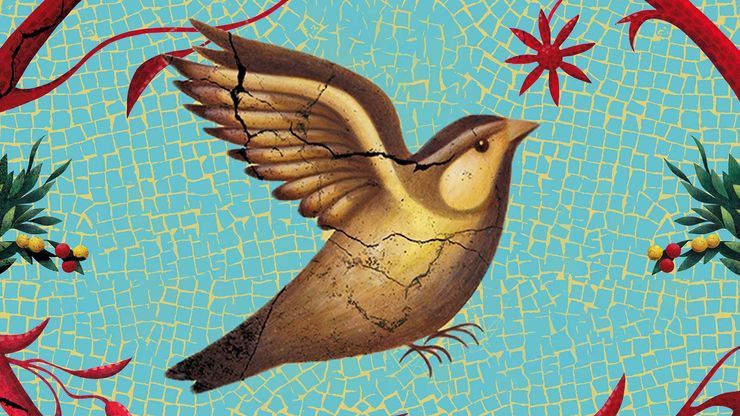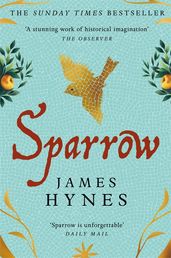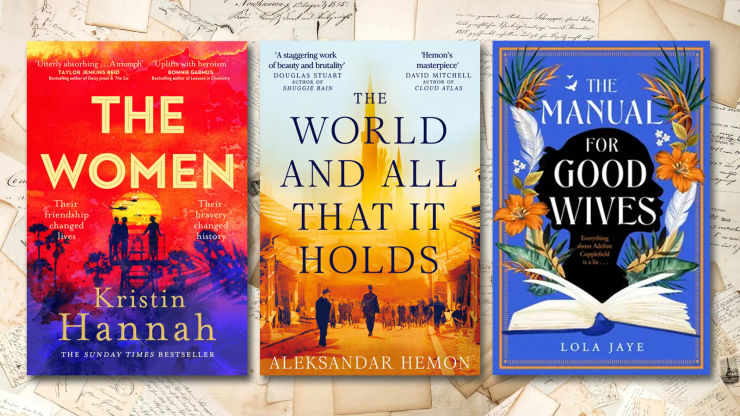'I wanted to write about Roman life from below': James Hynes on his historical novel, Sparrow
Through meticulous research and bold imagination, James Hynes has brought the dying embers of the Roman Empire, and the experiences of those enslaved by it, to vivid, brutal life. Here he tells us how he did it.

Those moved and overwhelmed by Hanya Yanagihara’s A Little Life, Emma Donoghue’s Room and Douglas Stuart’s Shuggie Bain will not want to miss the new novel from James Hynes. It tells the story of Sparrow, the last survivor of an abandoned British Roman town and one of the most powerfully affecting and memorable characters of recent fiction. Here, the author discusses the painstaking research involved in bringing Sparrow and his world to the page.
What sort of research did you do in order to write Sparrow?
In my home in Austin, Texas, I am up to my knees in cat hair and books about Roman history, society, and culture. I had two years of Latin in high school many years ago, but I’m hopeless at it, so I have also read a lot of Roman literature in translation. While I was writing Sparrow, I held down a state government job, so for the ten years it took to research and write the book, I did most of my work during my off hours.
In addition to Roman history and culture, I read, for comparative purposes, narratives of enslaved people in America from the nineteenth century (Frederick Douglass and Harriet Jacobs in particular), and I also read scholarship by and about modern-day sex workers, as well as books about the psychology of trauma, the history of sexuality, and the history of slavery in general. In 2016, I took a field trip to the city of Cartagena, formerly Carthago Nova, on the southeastern Mediterranean coast of Spain. The Roman theater there is pretty spectacular, and from one of the displays in the theater’s museum, I learned that by the time of my novel (the last decade of the fourth century), the theater had been converted into a market, which provided one of the major settings of my book. You can also still see the city’s Roman necropolis, which occupies a covered courtyard at the center of the Museo Arqueologico Municipal.
Why did you choose to write about slavery and sex?
Sparrow is the anti-I, Claudius. I wanted to write about Roman life from below, and I wanted to write a character as far from my own experience as I could get, in this case a Roman slave who didn’t know who his parents were, or even when or where he was born. Nearly all fictional narratives about the ancient world feature famous, usually elite Romans and/or well-known episodes in Roman history, and I wanted to see if I could make life on the Roman street vivid, entertaining, and suspenseful, without recourse to emperors, gladiators, or volcanoes.
More importantly, I wanted to tell a truthful story about the lived experience of Roman slavery. There are no surviving first person accounts by those enslaved by Romans, as there are by formerly enslaved Americans. In the canon of historical fiction about Rome, very few books take slavery as their main subject, and nearly all of those are about the Spartacus slave revolt. Such revolts in the ancient world were very rare, and I wanted to write about one of the millions who didn’t rebel, but instead struggled to endure under an unforgiving system that was questioned by no one (not even those enslaved). Sparrow is intended to be several stories at once –about a child’s coming of age in impossible circumstances, about the office politics of a Roman brothel, about life on the Roman street, and about the struggle of the enslaved to find love, friendship, and dignity. It is also a slave’s view of the triumph of Christianity and the last years of the Western Roman Empire.
Early in my research, I learned that sexual exploitation of the enslaved was an integral, and arguably even essential, element of the whole system of slavery. Not only did it provide the masters with (from their point of view) a cheap and convenient means of sexual release, it also served as a method of social control. I already knew that sex and slavery have always been linked – I was well aware of the story of Thomas Jefferson and Sally Hemings – but their connection in Roman life seemed particularly inextricable. You can’t write about one without writing about the other.
What drew you to writing historical fiction?
I’ve loved historical fiction since my early twenties. Some of my favorite books back then were J. G. Farrell’s Troubles, John Banville’s Doctor Copernicus, and Marguerite Yourcenar’s The Abyss, as well as the books of Thomas Kenneally. Having briefly attempted a series of historical novels about Roman Britain in my twenties, I made a more serious attempt at historical fiction in my late thirties, after the publication of my first novel, The Wild Colonial Boy. I spent five years or so working on a novel about Jacob Roggeveen, the Dutch “discoverer” of Rapa Nui, aka Easter Island. I read a lot of books, visited the Netherlands, and spent three weeks camping on Easter Island (still the most adventurous thing I’ve ever done). I wrote about 200 pages before abandoning the book, but the lessons I learned from that experience – chief among them that story and characters are paramount, with careful research a close second – I later used in writing Sparrow.
For readers interested in the subject of slavery and Rome, what books would you recommend?
The best introduction I know is Sandra Joshel’s Slavery in the Roman World. Intended for a general audience, it is vividly detailed, beautifully written, and bracingly angry. Professor Joshel also cowrote, with Lauren Hackworth Petersen, a more academic volume called The Material Life of Roman Slaves, in which the two authors look at the layout of Roman homes, villas, and businesses and ask where in these structures could slaves steal a moment for themselves, out of sight of their masters? It’s a very simple idea, but it broke open the whole worldview of the enslaved for me, by showing how, day by day or even moment by moment, a slave might try to reclaim some of her agency, autonomy, and dignity.
Two fine introductions to Roman ideas of gender and sexuality are Sexuality in Greek and Roman Culture by Marilyn B. Skinner and Roman Homosexuality by Craig A. Williams. The Brothel of Pompeii: Sex, Class, and Gender at the Margins of Roman Society by Sarah Levin-Richardson is a lively and lucid work of scholarship; I lifted the banker Musa’s nickname “Garlic Farter” from this book. As for life on the Roman street, I can enthusiastically recommend Mary Beard’s The Fires of Vesuvius: Pompeii Lost and Found and Robert Knapp’s Invisible Romans. Peter Brown’s The World of Late Antiquity helped define the study of the period, and Douglas Boin’s A Social and Cultural History of Late Antiquity is a very good general introduction to the period of Sparrow.
Finally, Orlando Patterson’s magisterial Slavery and Social Death not only posits a general theory of slavery, but it also compares and contrasts different types of slavery throughout history and across cultures. James C. Scott’s Domination and the Arts of Resistance: Hidden Transcripts explores in thrilling detail the different linguistic strategies that the powerful and the powerless use when talking to each other and among themselves.
Sparrow
by James Hynes
Raised in a brothel at the edge of a dying empire, a boy of no known origin creates his own identity. He is Sparrow, who sings without reason and can fly from trouble. He spends his days listening to stories told by his beloved ‘mother’ Euterpe, running errands for her lover the cook, and dodging the blows of their brutal overseer. A hard fate awaits Sparrow, one that involves suffering, murder, mayhem, and the scattering of the women who have been his whole world. Get ready to meet one of the most powerfully affecting and memorable characters of recent fiction.



